As a result of the ever-changing and expanding hair industry, the existing hair categories in the market have witnessed major changes and diversified into different variations, to better cater to the diverse and varied hair needs in the market. Among such varied hair types available in the field, Remy hair is among the most sought-after hair options, widely in favour of a vast majority of hair buyers across the globe.
To catch up with this market shift, as well as to marketize this specific hair line into a lucrative business opportunity, many hair business owners have gone out of their ways to obtain for themselves a stable source of Remy hair to target the rising hair demands. However, as the hair market is a highly competitive and complex one, many buyers have fallen victim to scammer’s tactics, mistaking the low-quality Non-remy hair with the standard Remy hair. To prevent more people from falling into such a trap, this article will provide the answers to the question: what is Remy hair, and what are the differences between Remy and Non-remy hair.
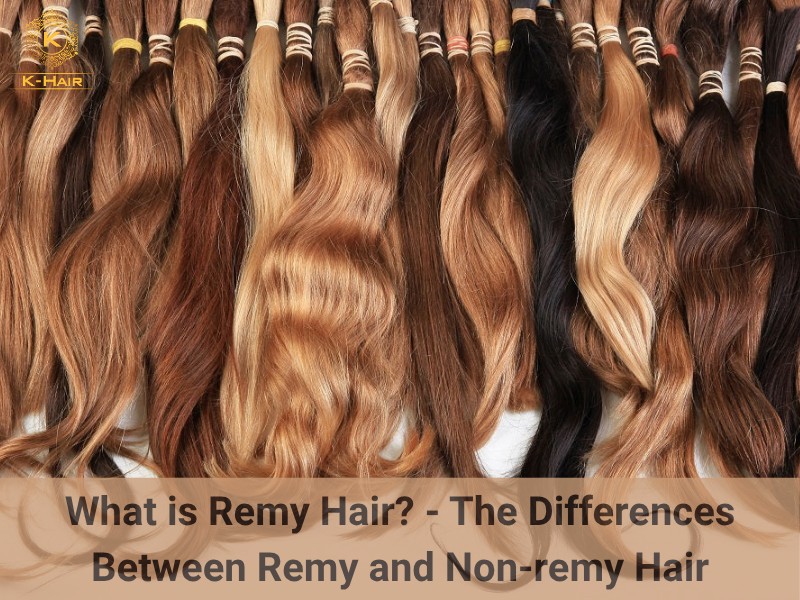
1. What is Remy hair?
Among the numerous hair type options in the market, Remy hair has made a name for itself as being one of the safest, most balanced hair qualities – offering both affordability and quality for its products. When answering the questions, what is Remy hair, we must first go over its origin.
Remy hair got its name from the French word “remis”, meaning cuticles. And much like its name, Remy hair – collected from 2-3 donors, is able to maintain many desirable traits seen in natural human hair, including having its outer protective cuticle layer intact and aligned in the same direction. Furthermore, all the aforementioned raw hair collected from 2-3 donors above must also be completely free from any prior traces of chemical involvement and stay that way throughout the entire hair production. Hence, when it comes to Remy hair, hair manufacturers can often guarantee its authentic hair origin, as well as its unprocessed, pristine hair health.
Thanks to such sourcing methods, Remy hair suppliers can enjoy a much wider range of raw hair materials, leading to a larger product availability and ultimately, lower pricing range compared to other limited hair sources in the market. Therefore, Remy hair has managed to secure its standing in the global hair market, attracting customers far and wide for its affordability and quality, especially those looking for a balance of both long-lasting potentials and economical pricing for their hair investments.
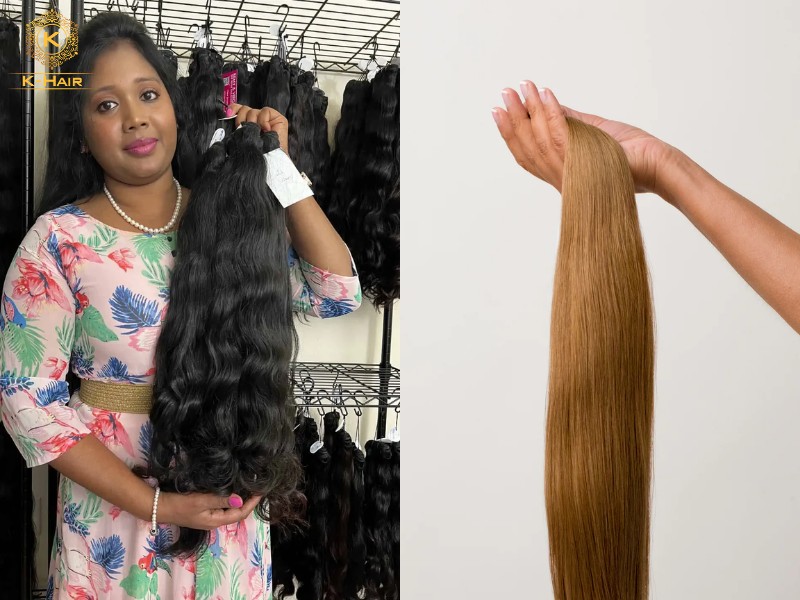
2. Characteristics of Remy hair
To define what is Remy hair, we must first acknowledge its features and characteristics, as a way to better identify Remy hair and distinguish its perks and drawbacks from other hair types in the market. Indeed, with such specific sourcing methods, Remy hair often comes with numerous distinct hair features, such as:
2.1. The extension process
To be considered Remy, the hair must be able to meet strict, demanding sourcing and production requirements regarding its chemical content, hence, before and during production, the hair must be kept completely free from any chemical involvement. Even the slightest mistake can cause the hair to lose its original hair health and integrity, hence, all the steps involved is done with utmost caution:
- Sourcing: to obtain the best, healthiest and most durable raw hair for production, the hair must be collected from young, healthy, voluntary hair donors only. Furthermore, their hair must also be kept in its pristine state and composure, without any prior records of chemical involvement in styling and treating, such as bleaching and dyeing. Only then the hair can be considered qualified for further hair production.
- Collecting and sourcing: after cutting the hair from its donors, the manufacturers would have to tie the hair in large bulk to prevent it from falling out or misaligned during transportation. After being delivered to the factory doors, the hair would then be detangled and sorted based on their lengths, colors, and quality. Among the strands, low-quality, short, or fragile hair strands would be rejected from the process to ensure only the best strands are included in the final product.
- Cleaning: after being sorted into different lengths and color, the hair would now be thoroughly cleaned and washed to get rid of any trace of dirt, oil, and product residues using warm water and conditioner. After that, the hair would be completely sun-dried naturally to avoid threat from traditional high heat drying methods.
- Production: in this step, the hair would be processed to form its final product form, such as wigs, clip-ins, tape-ins, wefts,… as well as be texturized and colored to customize the products according to the client’s wishes. However, even in this stage, Remy hair manufacturers rarely use harmful chemicals to curl, color the hair, instead, they often steam-process, or use herbal solution to help the hair to reach its desired hair look.
As a result, after the production process, Remy hair, with its authentic sourcing method and unprocessed hair quality, is introduced to the mass hair market.
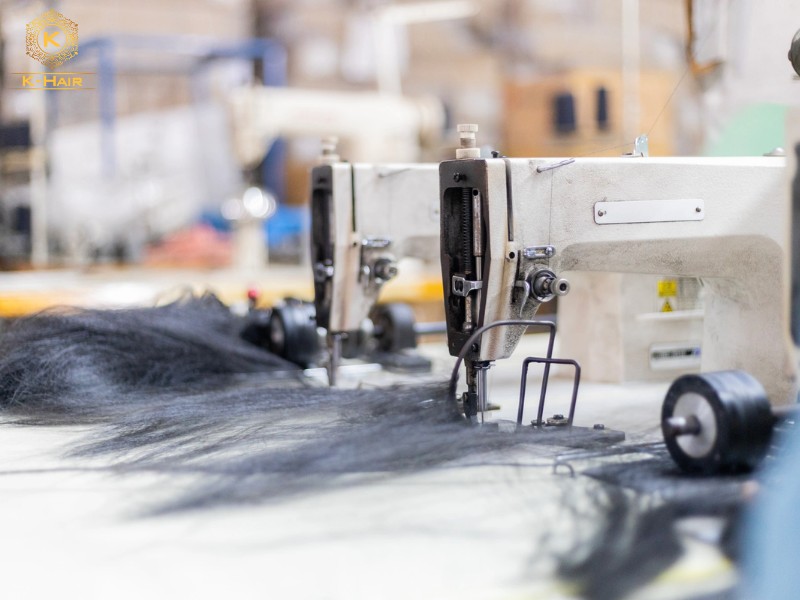
2.2. Hair quality
Answering the question: “What is Remy hair?” the hair type is often considered as among the highest hair quality out there. Indeed, Remy hair can guarantee significant cuticle uniformity and alignment from strands to strands, hence, offering both hair appearance and innate hair quality for each and every of its products:
- In terms of physical appeal: Remy hair can secure many desirable traits seen in our own hair, such as softness, silkiness and natural luster. In fact, by having most of its cuticle intact and aligned in a similar direction for each strands, Remy hair can not only better maintain its moisture and nutrients, but also reflect light beautifully and deliver a lustrous, eye-catching hair shine rarely seen in synthetic, low quality hair types.
- In terms of hair quality: Remy hair, much like our own hair, can allow a certain extent of styling versatility for its clients. In the hands of hair stylists and salon professionals, Remy hair can still be styled, curled, and straightened to one’s liking, with proper maintenance afterward. On top of that, its bleachability is also another impressive trait that Remy hair possesses, allowing it to be bleached to #27 honey blonde, and work extremely well with warm-toned colors – a staple for its versatility and hair performance.
However, when discussing its innate quality, we cannot ignore several limitations often seen in customers purchasing this specific hair type. Indeed, due to being collected from 2-3 donors, Remy hair cannot promise maximal cuticle alignment like other single-donor hair types. In many cases, some hair strands might be of completely different cuticle directions, and hence, making it slightly more prone to tangling and shedding. Such features can not only add more limitation to its styling and bleaching range, but also make Remy hair slightly more difficult to manage and maintain, compared to other single-donor hair lines in the industry.
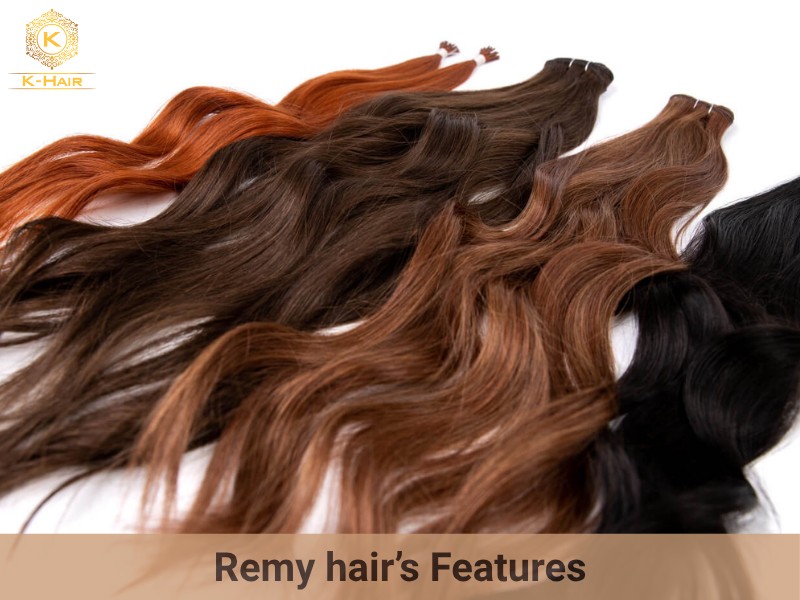
2.3. Price
One major strength of Remy hair lies in its affordability and accessibility, making it the favourite, go-to hair type option for a vast majority of hair buyers with limited, tight budgets in the market.
- Being collected from 2-3 donors, Remy hair does not have the extremely strict, demanding requirement regulating how many donors the hair strands can come from, and hence, can enjoy a wider, more abundant raw hair supply source than the single-donor Virgin. Such improved hair availability also enables Remy hair to provide a stable, enormous hair source necessary for all hair businesses to maintain smooth operation and inventory security for their hair brands.
- Furthermore, with such wide availability, Remy hair suppliers can further improve their output volume and abundance, which ultimately allows them to reduce their unit price and make Remy hair as affordable and accessible as we see today.
Remy hair is indeed the most economical hair type among all high-quality options in the market. For example, in K-Hair – one of the most reliable hair manufacturers in Vietnam, their offered price for a standard 20” Remy hair weft is from $40-$54, depending on the density level of the product.
2.4. Lifespan
One of the reasons people ask what is Remy hair is because its lifespan is noticeably longer than lower-grade alternatives. In terms of lifespan, Remy hair has been highly praised by its past customers, mainly for its long-lasting longevity and durability, making it the most suitable hair investment in the market.
Indeed, under proper care, Remy hair can last up to 2-3 years or more, while still allowing flexible styling and bleaching for its hair users. In many cases, for hair users maintaining good care for their Remy hair products, the recorded lifespan of their hair items has reached more than 4 years, before showing signs of serious deterioration. Hence, if your business is aiming to target stylist, salon owners, for hair buyers wanting to personalize, style and make adjustments to their hair items, or clients demanding versatile and durable hair lines, Remy hair should be your key inventory to best satisfy such a customer base.
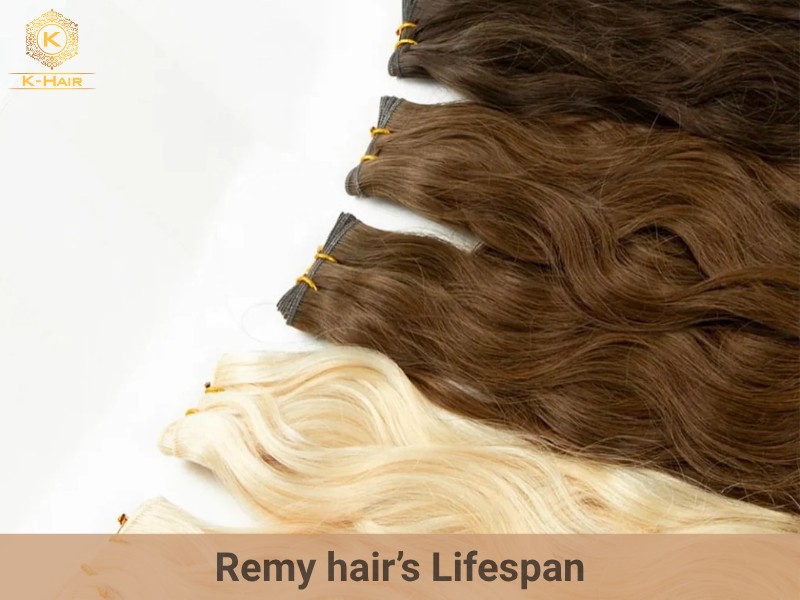
3. What is Non-remy hair?
Non-remy hair, unlike Remy hair, is the lowest quality of human hair in the market – the opposite of its Remy hair counterparts.
In fact, unlike Remy hair, collected from voluntary, healthy and young human donors, Non-remy hair consists of mostly tangled, messed up hair, collected from salon floor, trash, sidewalks or public bathrooms – highly unsanitized places. Hence, after being collected from its original source, Non-remy hair still requires complex and extensive detangling and cleaning, in order to get rid of any dirt, oil, or foreign content on the hair strands – potentially causing even more damage and deterioration to the already weak, dull hair.
Furthermore, due to being collected from multiple unidentifiable sources, most of the hair strands consisting in Non-remy hair products might be of extremely low quality and have already been damaged by chemical or other harmful substances before its sourcing. As a result, Non-remy hair can rarely promise the same level of cuticle uniformity seen in Remy hair, and cannot provide the same desirable and in-demand hair physical appeal and versatility of natural human hair.
Therefore, for most hair suppliers providing Non-remy, in order to conceal such low hair quality and attract more sales for their business with more creative, fraudulent methods, including applying a silicon coating layer to cover up the dull, brittle, coarse hair strands, and making it more desirable to the masses. However, after a few wash, such coating layers will soon fade over time, and its initial lack of shine, durability, and physical appeal would soon give them away, exposing its unappealing features and hair shine.
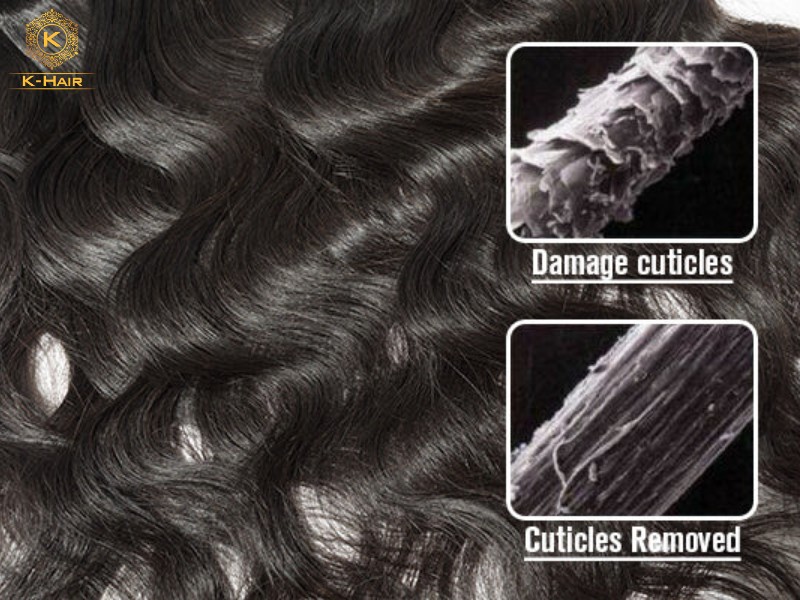
4. Differences of Remy Hair vs Non-Remy Hair?
Alongside the continuous development of the global hair industry, also comes the underlying threat of scammers and unreliable hair vendors, promoting low-quality Non-remy hair as authentic Remy hair, taking advantage of the unknowing buyers in the market. In order to avoid such issues, as well as protecting your wallet and securing only the best hair inventory for your business, hair entrepreneurs must be able to tell apart the two hair types when stocking hair in the market.
This comparison makes it easier to understand what is Remy hair and why it behaves differently from Non-remy hair:
| Remy hair | Non-Remy hair | |
| Hair origin | Possessing authentic, reliable hair origin:
→ Completely unprocessed, authentically sourced hair |
Unsanitized, unhygienic hair origin:
→ Unreliable, unsanitized hair source |
| Physical features | In terms of physical appeal, Remy hair can mimic the desirable look of natural human hair:
|
In terms of physical appearance, Non-remy hair can still deliver a lustrous, shiny and soft appeal at first glance. However, after a few washes, the hair’s outer silicone layer would be washed off → exposing its dull, undesirable appearance underneath. |
| Versatility | Remy hair, although cannot allow the ultimate versatility, can still make room for flexible styling options:
|
Due to being collected from multiple, unidentifiable sources, Non-remy hair’s versatility is much affected by its origin:
|
| Durability | Remy hair is the longer lasting hair option:
→ The best candidate for long-term hair use |
Non-remy hair is the inferior hair type option when it comes to durability: Can only last up to 3-6 months if cared intensively for, before showing signs of deterioration.
→ Requires more frequent replacement, more costly in the long run |
| Pricing | Remy hair, due to being collected from authentic human hair, is often more expensive than Non-remy hair. However, compared to other high-quality hair in the market, Remy hair is still the most reasonably-priced, affordable hair line out there → suitable for clients looking for both affordability and quality. | The only strength that Non-remy hair has over Remy hair is its extremely competitive pricing: Consisting mostly of hair trash → much more widely available than Remy hair collected from human donors. However, given that Non-remy hair comes short in durability, and versatility, it also demands more frequent replacement → making it a more costly and unwise hair investment in the long run. |
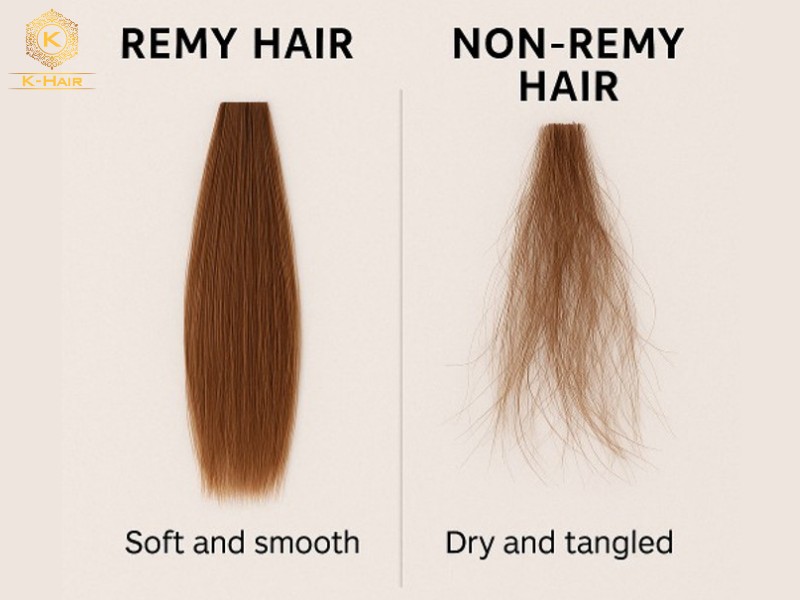
5. How to Verify the Authenticity of Remy Hair?
Knowing the differences between Remy vs Non-remy hair, or being aware of what is Remy hair is rarely enough. Indeed, as previously mentioned, even the low-quality Non-remy hair can be coated with silicone and marketed as authentic Remy hair – carrying such natural hair shine that confused and misled many buyers in the market. Therefore, when sourcing your inventory from other suppliers, it is necessary for all hair business owners to equip themselves with tips and methods to check the legitimacy of the Remy hair, in order not to fall for the lustrous appearance and competitive pricing of many disguised Non-remy hair in the market:
5.1. Visual proofs
When inquiring what is Remy hair with a vendor, hair buyers, as the one in control of the conversation and transaction, should not hesitate to demand their vendor for proofs to help verify the legitimacy of their claims. These visual proofs might include: close-up images of the hair’s textures and appearances; images, or videos presenting the products; live footage, videos of the hair production process or factory sites,… Only if the vendor is able to provide with extensive evidence backing up their authenticity and genuinity, then the buyers should move forward with the inquiry.
5.2. Video calls
One effective way to examine the authenticity of the supplier is to pay a direct visit to their site and office. However, given the inconvenience that comes with long travelling distances, most customers can still resort to scheduling video calls to inspect the hair in person. This way, buyers can not only get familiar with the supplier providing them the Remy hair, but also gain the most honest insights of the hair’s quality and appearance. During the video call, you can ask extensive questions about the products, its limitations, to test the knowledge of the supplier, or asking them to run their fingers through the hair to check for any sign of excessive tangling and shedding.

5.3. Vendor legitimacy
The safest, most reliable vendor options are often ones with transparent business registration, as well as hair brand names that can be easily found of social media or search engines, alongside with transparent social media accounts, contact information, and professional website, on which they will promote or present their hair product and connect with their potential clients. Furthermore, their business must be registered with a legitimate authority – meaning that their operation is under the regulation of the government, hence, reducing the chances of them selling low-quality, fraudulent hair products. A reliable supplier should be transparent about what is Remy hair and how they source it.
5.4. Hair tests
One of the most effective ways to put a hair’s quality to the test is to perform hair tests on the products. You can either perform the following hair tests yourself, or demanding the results of these tests from your hair vendor during the inquiry:
- Bleaching test: take a small section of the hair, apply hair bleach onto it and wait the required amount of time for the chemical to be absorbed completely: if the hair can be bleached to #27 honey blonde and deliver an even color distribution → it is Remy hair. However, if the hair cannot be bleached as bright, or produce uneven, unnatural hair color → it is most likely Non-remy hair.
- Water test: cut a small section of the hair and put it in a cup of water: if the hair still stay afloat on the surface of the water, this is a sign showcasing that the hair’s outer cuticle layers is still mostly intact, preventing the water to penetrate through → it is most likely Remy hair. If the hair sinks quickly to the bottom of the glass, this could mean that the hair’s cuticle layer is heavily damaged, signifying that it could be Non-remy hair.
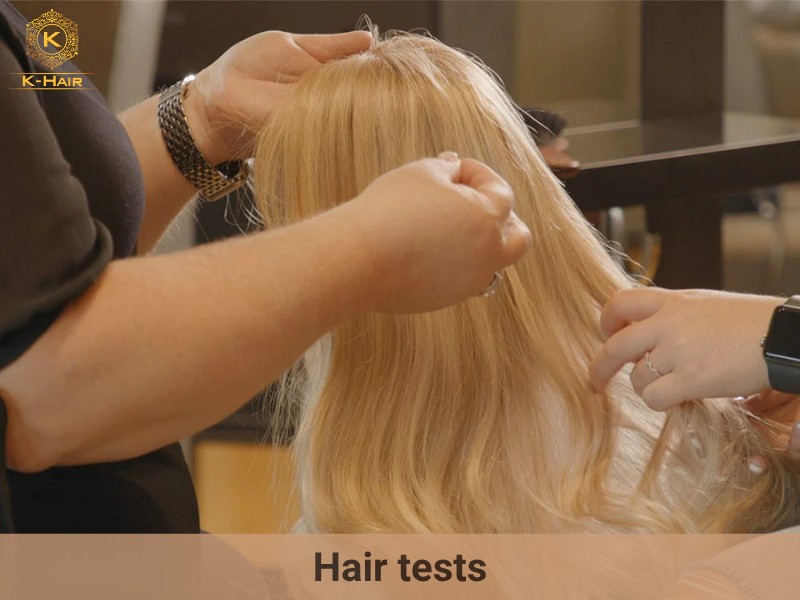
5.5. Ask for reviews
When inquiring what is Remy hair, you might also want to go over the vendor’s uploaded feedback first to check their legitimacy and get a better picture of their past customer experience and customer satisfaction. However, as these proofs can easily be deepfake or stolen from other suppliers, you might want to take the extra step and ask for reviews from other sources: relatives, friends, colleagues, or other competitors, hair influencers,… for a more honest opinion.
6. Type of Remy hair products
Once you understand what is Remy hair, it becomes easier to explore the wide range of Remy hair products available today. Following the rising and diverse hair demands from women across the globe, the international hair market has managed to adapt to such changes by providing even more diverse Remy hair product types to buyers worldwide. Indeed, by diversifying types of products, as well as the density levels of such products, hair manufactures have successfully catered themselves to a wider customer base, with different pricing and hair preferences.
6.1. Different product categories
Noticing the rising demands for complex, advanced hair products in the market, many Remy hair products have been introduced to the market:
6.1.1. Wigs
Wigs the most lucrative product category of Remy hair – taking up to 75% of the global hair market. Wigs – consisting of wefts and a lace – are mostly used as a cosmetic hair piece able to cover the entire head area of its wearers, from the frontal hair line to the nape, perfect for full glam hair look or complete hair transformation. In the market, Remy hair wigs are often praised for its fast-installation, taking only less than an hour to be applied to the user’s head, allowing not only full transformation, but also more convenience for hair users with a busy lifestyle. The existing wig types in the market might include:
- Frontal/Closure lace wigs: classic wig construction, consisting of several wefts, and a lace, sizes of choosing, attached at the frontal hair line of the wig.
- Full lace wigs: one of the most delicate wig variations in the market. Instead of a wig cap as base, each of full lace wigs’ hair strands is manually crocheted into a sheer lace base → delivering a natural, invisible lace feel to the hair look.
- 360 lace wigs: combine the features of both the above. 360 lace wigs feature a sheer lace part surrounding the outer part of the wig, with a small wig cap part at the top head area.
- U-part/V-part wigs: this particular wig variation contains no lace at the frontal hair line, rather, it leaves out a U-shaped/V-shaped part at the frontal part of the wigs for the wearers to style and blend their natural bang with the wig.
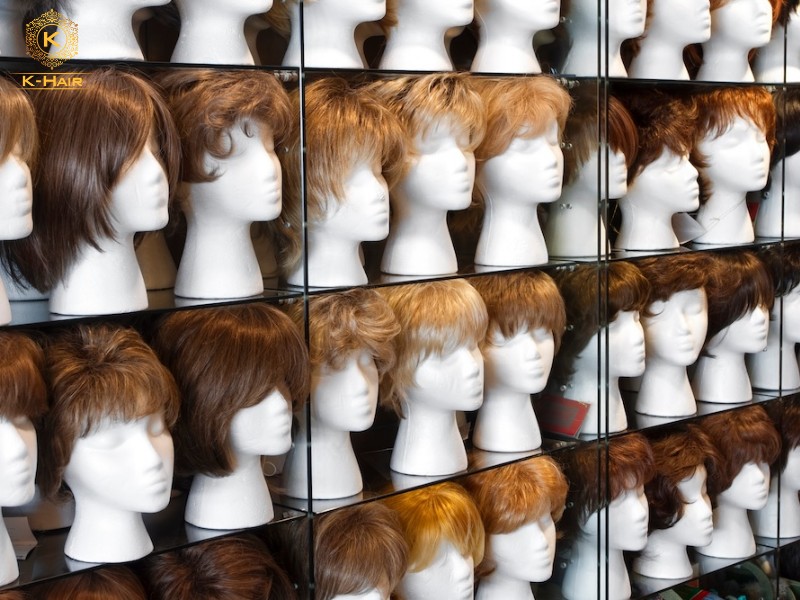
6.1.2. Closure/Frontal
Also known as lace, closure and frontal are among the most delicate hair products, as they must be done completely by manual labour, with each strand crocheted to a sheer lace base by the hands of skilled hair workers. Hence, laces are widely used in wig construction, mainly for its delicate appeal and its ability to blend in seamlessly into the wearer’s scalp. Normally, the bigger the lace, the more flexible bang styling it allows. For example, the biggest 13×6 lace option can allow the most styling flexibility, as the lace can be styled to multiple bang options, such as slickback, sideparts, middlepart, or dramatic bangs,… The two types of lace quality in the market are:
- HD Lace: is the most natural-looking, thinnest lace types → blend in seamlessly into the user’s scalp, can be used for all skin types.
- Transparent Lace: is the standard lace type, thicker and more durable, but still leaves a slightly visible lace line at its edge, and works best for light skin tones.
6.1.3. Hair wefts
Hair wefts, or hair bundles, are extensions consisting of hair strands sewn into a singular strip and folded into a bundle. This particular hair extension option is widely used in the sew-in method, in which the weft will be sewn into the wearer’s natural hair using their braids as base. Once the application is finished, hair wefts and its sew-in can deliver the most long-lasting application result – lasting 1-2 months, extremely durable and hence, suitable for hair wearers with active lifestyle.

6.1.4. Clip-ins
Clip-ins often feature layers of small wefts, with small hair clips attached at the root of the wefts. These hair clips, despite its small size, can help the clip-ins to be attached to the user’s natural hair within seconds – allowing fast, time-efficient extension application for their users. In today’s world, clip-ins have soon become the go-to hair extensions options for all modern women out there, as its fast-application method can best cater to their busy lifestyle.
6.1.5. Tape-ins
Tape-ins often come in small, flat wefts, with a small double-sided tape at the root of its products – allowing the hair to be attached to its user and lies flat against their scalp once the protection seal is taken off. Thanks to its flat appeal, tape-ins can add volume and length to the natural hair look, without feeling bumpy or unnatural.
6.1.6. Keratin bond extensions
Keratin bond extensions are among the most advanced hair lines in the market, widely used by stylists and salon professionals. Each piece only weighs up to 15-20gr, featuring a keratin head at one end. This keratin part can be melted and act as adhesive, attaching the piece to the user’s hair – creating a natural, invisible extension application. Nowadays, many keratin bond extension variations have been introduced to the market, like Flat tips, V-tips, U-tips,… each distinguished by the shape of their keratin ends.
6.1.7. I-tips
I-tips can be considered as a variation of the keratin bond extensions, however, what makes it different is that, I-tips can be attached to the user’s hair using a micro ring or nano-ring, instead of using the traditional heat method.
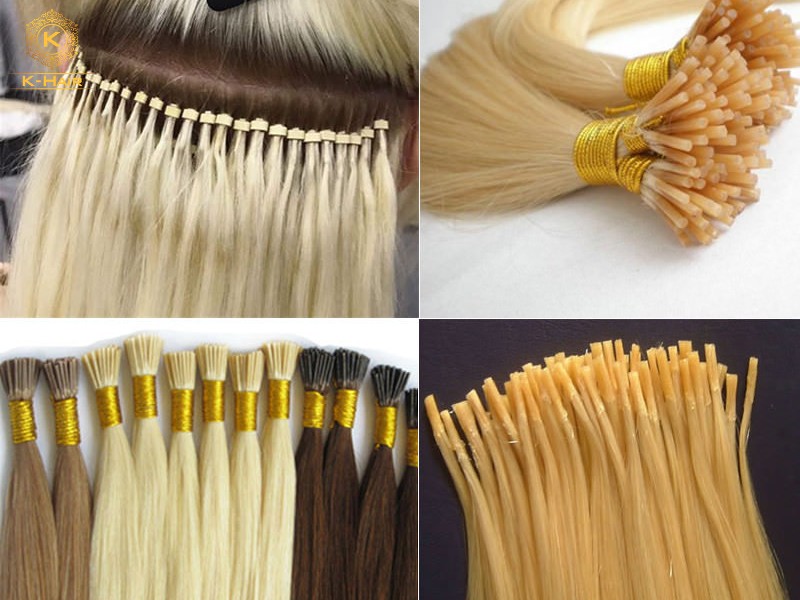
6.2. Different density levels
Density level refers to the percentage of long strands included in a hair bundle, hence, determining how thick or voluminous the hair will appear in the eyes of customers. In the hair industry, products are generally divided into three main density levels: Single Drawn, Double Drawn, and Super Double Drawn, each best suited to serve different hair preferences of different buyer groups. Such diverse density levels are especially beneficial for wholesalers and hair businesses across the globe, as it allows them to select the most suitable fullness and physical appeal needed for their own targeted markets:
- Single Drawn: this is the standard density level commonly seen across most hair products in the market. With 45% of long strands included, Single Drawn hair can best mimic the natural growth pattern of real human hair, resulting in a soft, layered, and effortless look. Thanks to its gentle volume and natural hair effect, this density option is ideal for brands targeting an everyday, understated beauty style, or those whose customers value elegant and realistic appearance in their hair extensions.
- Double Drawn: with 60-65% long strands included, Double Drawn hair is the safest and most flexible choice for a wide variety of buyers worldwide. Offering the perfect blend of natural layer and fullness, this density level delivers both the effortless feel of Single Drawn hair and the enhanced volume of Super Double Drawn hair. Because of this versatility, Double Drawn is often the go-to option for clients seeking a balanced, flexible look.
- Super Double Drawn: this is the highest and most luxurious density level available, with more than 80-85% long strands included. With an impressive concentration of long strands evenly distributed from root to tip, Super Double Drawn hair provides maximum thickness and fullness, delivering a rich, glamorous appearance that perfectly suits current global trends favoring bold, voluminous hairstyles.
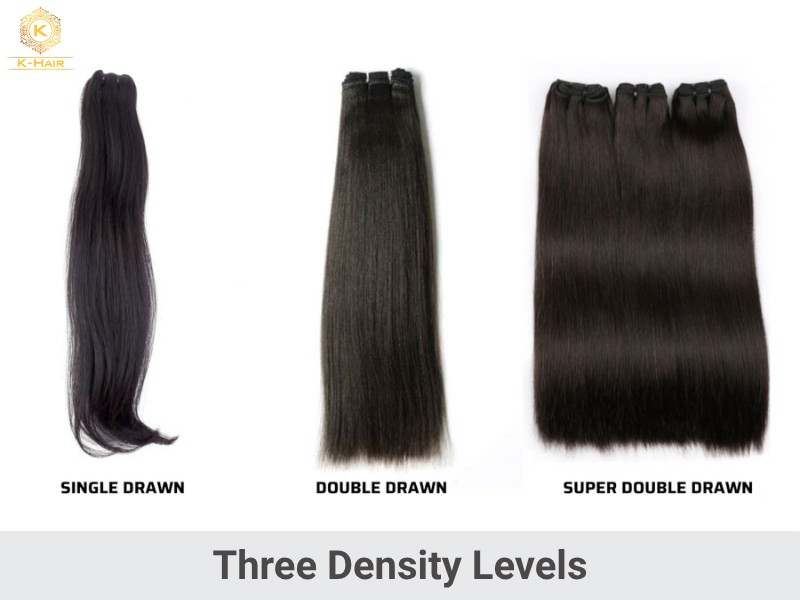
7. Why should You stock Remy hair extensions?
For business owners who already know what is Remy hair, the next step is understanding why this hair type is worth stocking. With more and more competitors joining the field, each and every hair business has to face the enormous pressure from the competitive market, with many struggling to find a way to break through and make a name for themselves. Facing such challenges, it is highly suggested for all hair entrepreneurs out there to be better informed of the market’s consumption patterns, the buyer’s preferences and their favouritism, and provide the most suitable product to satisfy their specific needs, rather than blindly following the flow without any consideration.
Being one of the most sought-after hair lines in the market, Remy hair can provide a good start, or a second chance for hair businesses across the globe, providing the opportunity to expand one’s business scale and profit volume:
- Authentic hair origin: with the increasing threat from scammers promoting fraudulent, unreliable hair quality, the global hair market is becoming more and more conscious about the sourcing method, as well as the origin of the hair. Indeed, hair types with suspicious, unguaranteed hair origin and unethical sourcing methods have soon been boycotted by most hair buyers in the market. Facing such a shift, Remy hair and its authentic hair origin and reliable sourcing method, has captured the attention of many customers worldwide, especially those who take careful consideration in their hair’s authenticity and genuinity.
- The global increasing demands for high-quality hair: thanks to the economic growth seen in many parts of the world, more and more women across the globe are able to have more financial stability and disposable income to spend on their personal hair needs. This, coupled with the increasing availability of hair products, raised their overall standards for hair products, leaning toward high-quality, durable, versatile and high-performance hair extension solutions. Hence, offering high-quality hair types such as Remy hair in your product category can help your brand to ride the waves, catching up with such a market shift and secure more profit from a high-end hair market.

- Hair display value: Remy hair can deliver much more than just its authenticity and quality, it can also offer impressive display values for hair businesses looking for a new vedette for their storefront. Indeed, with its soft, silky, smooth look, along with its lustrous, natural hair shine, Remy hair can capture the attention of any passerbys – attracting more and more visiting customers to your store if used as a window display.
- Affordability: despite the emerging expansion of the hair industry in many parts of the world, numerous women in middle-lower income still find it difficult to access the global high-end hair extension solutions, especially for their expensive and costly pricing model. Facing such issues, Remy hair has become the perfect candidate – satisfying this market sector’s rising hair needs, without compromising on quality and hair performance. Furthermore, by targeting this affordable hair line, your business can also enjoy a much cheaper unit price, making it the safest option for hair startups with limited capital wanting to jump start their success.
- High market demands: Remy hair and its signature features are highly sought-after in many parts of the world. Indeed, in the African hair market, where buyers highly prioritize affordability and quality, Remy hair – having balanced both, is often the hottest hair type options, highly in demand of many women hair buyers in this specific region. By offering Remy hair and targeting this diverse, potential hair market, business owners can not only minimize the threat from other competitors, but also secure profit from one of the biggest hair market sectors across the globe.
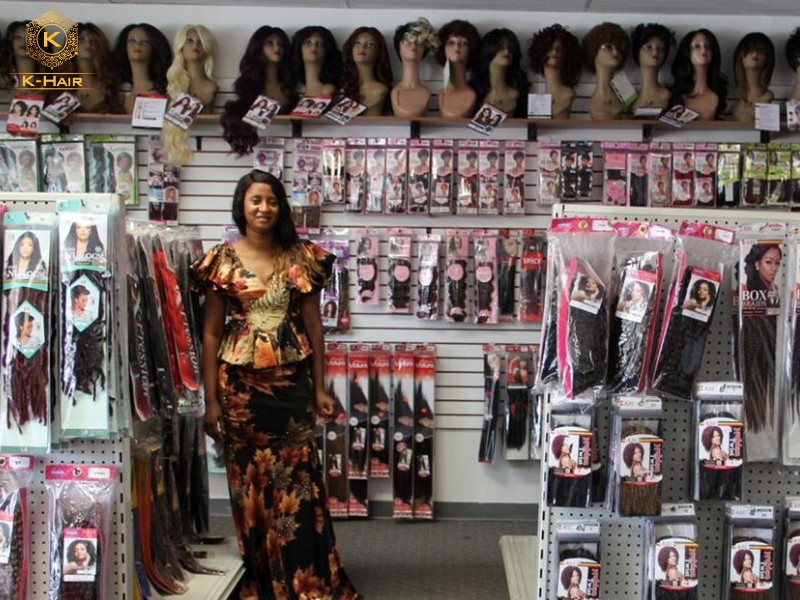
8. Why you Should Choose K-Hair
Among the many Vietnamese hair extension suppliers available in today’s market, K-Hair Factory and their Vietnamese Remy hair collections have continued to earn remarkable recognition from international buyers, largely due to their well-balanced combination of quality, flexibility, and competitive, market-friendly pricing. K-Hair Factory continues to stand out as a reputable source for buyers who truly understand what is Remy hair and value authenticity.
- With more than 35 years of experience in the hair industry, K-Hair has successfully secured its standing as one of Vietnam’s most reputable and long-established manufacturers, consistently supplying Remy hair made from 100% Vietnamese human hair, ethically sourced and carefully processed to retain the hair’s innate strength, shine, and overall durability.
- Each bundle of Remy hair is collected from young, healthy Vietnamese donors, whose hair is kept entirely free from harsh chemical treatment prior to production. Thanks to this minimal-processing approach, K-Hair’s Remy hair remains soft, smooth, and resilient, with reduced chances of tangling or shedding. As a result, the hair can still perform beautifully under various styling methods, coloring, heat styling, and even moderate bleaching, without compromising its natural texture, making it a highly practical choice for both professional stylists and salon owners seeking reliable, long-lasting extensions.
- A notable advantage of working with K-Hair also lies in their diverse customization capabilities. Their Remy hair line is offered in a wide selection of textures, densities, and color options, ensuring each buyer can find a suitable match for their brand’s aesthetic and market preferences. Whether the order calls for Single Drawn, Double Drawn, or Super Double Drawn Remy hair, K-Hair maintains a consistent level of authenticity and quality across all batches.
- Beyond the product quality itself, K-Hair distinguishes its brand through customer-centered service and transparent policies. First-time customers benefit from flexible deposit terms, requiring only a 70% upfront payment, which reflects the company’s long-standing commitment to buyer security, clarity, and mutual trust.
- Furthermore, K-Hair prioritizes smooth communication, secure payment options, and ongoing support throughout the purchasing journey, from initial consultation and production updates to international delivery and after-sales care. Their growing customer base across major markets such as Nigeria, Brazil, and the United States stands as clear evidence of their credibility, reliability, and dedication to sustainable cooperation.
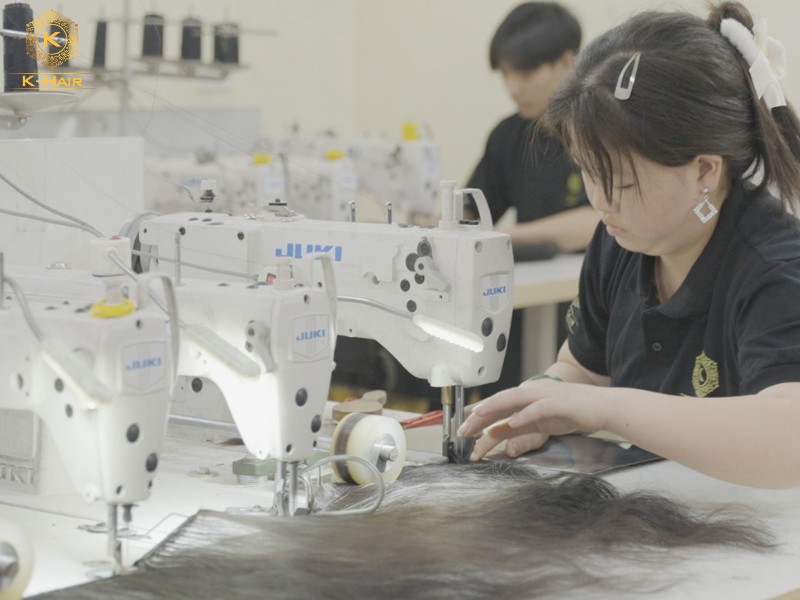
Ultimately, for global buyers in search of not only premium-quality Remy hair but also a dependable, cooperative manufacturing partner, K-Hair Factory represents the essence of professionalism, authenticity, and consistency within the Vietnamese hair industry. With ethically sourced hair and customer satisfaction placed at the core of their operations, K-Hair remains an excellent choice for those prioritizing stable supply, steady quality, and a trustworthy long-term partnership
Contact For More Information:
- Website: https://khairvn.com/
- Address: 10A, 171 Nguyen Ngoc Vu, Yen Hoa, Hanoi, Vietnam
- Phone: +8492 633 2545 (WhatsApp)
- Email: [email protected]
- Facebook: https://www.facebook.com/KHairFactoryVN/
- Youtube: https://www.youtube.com/c/KHAIRFACTORYBESTVIETNAMHAIR
- Whatsapp: +8492 633 2545
>>Want to take a quick look into our hair quality? Check out this hair test video:
Raw Hair Test (gone crazy) with Lovitto Trend
9. Conclusion
With the information provided in this article, we hope that we have managed to assist young, ambitious business women in the hair industry about the overall market, tips, and most importantly, the most trusted supplier for lace wigs, as well as what is Remy hair. Doing business requires long-term commitment and support from trustworthy business partners, we proudly present ourselves not only as a trusted hair supplier, but also a supportive friend who will always have your back in this competitive industry.
Need to chat with a Remy hair specialist?

